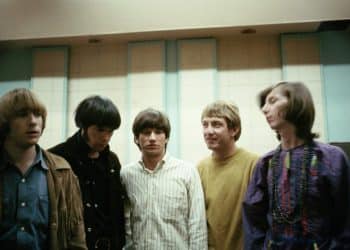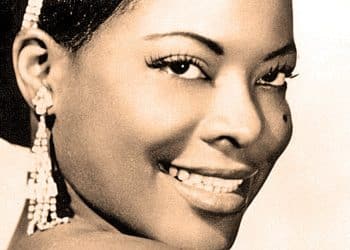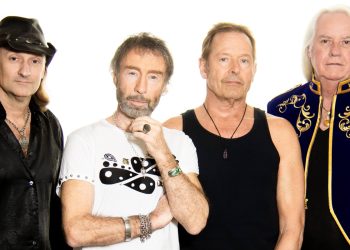Few instruments capture emotion quite like the piano. Its keys have told stories of love, loss, triumph, and beauty for centuries. In this article, we’re celebrating the Top 15 Most Popular Best Piano Songs of All Time—a stunning collection of masterpieces that have resonated across generations and genres, leaving an indelible mark on music history.
From the haunting elegance of Beethoven’s “Moonlight Sonata” to the powerful pop ballads of Adele and Elton John, these songs showcase the piano’s incredible versatility—capable of delicate whispers and thunderous roars. Whether it’s the cinematic drama of Yiruma’s “River Flows in You”, the jazzy brilliance of Ray Charles, or the unforgettable hooks of Billy Joel, each track on this list is a testament to the piano’s power to stir the soul.
Whether you’re a pianist, a music lover, or someone who simply gets goosebumps when a beautiful melody begins, this list will take you on a journey through some of the most iconic and emotionally rich songs ever played. So sit back, close your eyes, and let the music carry you—because when the piano speaks, the whole world listens. 🎹✨
1. Franz Liszt – Liebestraum No. 3 in A-flat Major (1850)
Liszt’s Liebestraum No. 3 (translated as “Dream of Love”) is a quintessential Romantic-era piano work, brimming with passion, tenderness, and virtuosity. Published in 1850, it was originally part of a set of three Liebesträume, each based on a poem about different aspects of love. The third and most famous of the set unfolds with a delicate, lyrical theme that gradually builds into soaring, expressive passages. Its flowing arpeggios and rich harmonies give the piece a dreamlike, almost hypnotic quality. While the technical demands of Liebestraum No. 3 showcase Liszt’s virtuosic brilliance, it is ultimately the emotional depth and heartfelt lyricism that make it unforgettable. This piece continues to captivate pianists and audiences alike, embodying the full spectrum of romantic expression.
2. Frédéric Chopin – Nocturne in E-flat Major, Op. 9, No. 2 (1832)
Few composers captured the piano’s lyrical potential as beautifully as Chopin, and his Nocturne in E-flat Major is a shining example. Written in 1832 when Chopin was only 21, this piece embodies elegance, refinement, and emotional depth. Its graceful, singing melody unfolds with a gentle ebb and flow, resembling a heartfelt conversation. The embellishments and delicate ornamentations give it a sense of shimmering lightness, while the underlying harmonies provide a rich, warm foundation. The piece gradually intensifies, leading to a passionate climax before resolving into a peaceful conclusion. A favorite among pianists and listeners alike, this nocturne epitomizes Chopin’s gift for blending technical brilliance with deep, expressive emotion, making it one of the most beloved piano compositions of all time.
3. Wolfgang Amadeus Mozart – Piano Sonata No. 16 in C Major, K. 545 (1788)
Often called “Sonata Facile” or “Sonata Semplice,” Mozart’s Piano Sonata No. 16 is a delightful piece that radiates clarity, grace, and classical charm. Composed in 1788, Mozart described it as “for beginners,” yet its elegance and precision make it a rewarding piece even for advanced pianists. The first movement is bright and lively, with a buoyant melody that dances effortlessly across the keyboard. The second movement, by contrast, is more tender and introspective, offering a moment of lyrical beauty. The final movement brings back a sense of joyful energy, rounding out the sonata with playful brilliance. Though simple in structure, the piece is a testament to Mozart’s genius—proving that even the most straightforward music can be deeply engaging and timelessly enjoyable.
4. Ludwig van Beethoven – Für Elise (1810)
Few piano pieces are as instantly recognizable as Beethoven’s Für Elise. Composed in 1810 but not published until long after his death, this charming yet mysterious piece has captivated audiences for generations. Its delicate, flowing melody alternates between wistful melancholy and playful energy, making it both emotionally evocative and technically engaging. The piece begins with a simple, almost hypnotic theme before transitioning into more intricate and dramatic sections, showcasing Beethoven’s mastery of contrast. Für Elise has remained a favorite among pianists of all levels—not only for its accessibility but also for its timeless beauty. Whether played by a beginner or a virtuoso, it retains its enchanting quality, serving as a perfect example of Beethoven’s ability to infuse deep emotion into a short, deceptively simple composition.
5. Claude Debussy – Clair de Lune (1905)
Debussy’s Clair de Lune is one of the most poetic and mesmerizing pieces in classical music. As the third movement of Suite Bergamasque, it was published in 1905, though Debussy had begun working on it over a decade earlier. The title, meaning “moonlight” in French, perfectly captures the piece’s ethereal and dreamlike quality. Its fluid, impressionistic harmonies create a shimmering atmosphere, like moonlight reflecting off water. The piece begins with gentle, almost whispered notes, gradually building into lush, flowing passages that evoke a sense of quiet wonder. Debussy’s use of delicate phrasing and expressive dynamics gives Clair de Lune a unique ability to transport listeners to a tranquil, otherworldly space. Revered for its beauty, the piece is often associated with romance, contemplation, and the serene majesty of the night.
6. George Gershwin – “Rhapsody in Blue” (1924)
A revolutionary blend of jazz and classical traditions, George Gershwin’s Rhapsody in Blue (1924) is a vibrant and exhilarating composition that captures the energy of early 20th-century America. From the unmistakable opening clarinet glissando to the sweeping, cinematic piano runs, the piece brims with innovation and emotion. The piano serves as both a soloist and a driving force behind the work’s lush, unpredictable harmonies, embodying Gershwin’s genius in fusing different musical styles. Whether performed with a full orchestra or in a solo piano arrangement, Rhapsody in Blue remains a bold and unforgettable masterpiece.
7. Sergei Rachmaninoff – Prelude in C-sharp Minor, Op. 3, No. 2 (1892)
Rachmaninoff’s Prelude in C-sharp Minor is a powerhouse of drama and intensity. Composed in 1892 when he was just 19, this striking work quickly became one of his most famous compositions. Nicknamed the “Bells of Moscow,” the piece opens with thunderous, commanding chords that create a sense of grandeur and urgency. This leads into a contrastingly delicate middle section, where a haunting melody emerges before building back to a thunderous climax. The prelude’s dynamic shifts and rich harmonies showcase Rachmaninoff’s deep emotional range and technical brilliance. It remains a staple of the piano repertoire, beloved for its bold, cinematic quality. More than a century later, its powerful impact still resonates, making it one of the most thrilling and unforgettable piano works ever written.
8. Johann Sebastian Bach – “Prelude in C Major” (1722)
The “Prelude in C Major” from Bach’s Well-Tempered Clavier (1722) is one of the most recognizable and revered pieces in classical piano music. With its gentle, flowing arpeggios, the piece creates an atmosphere of serenity and order, while its underlying complexity showcases Bach’s mastery of harmony and structure. Though it may seem simple at first glance, the prelude demands a deep understanding of musical phrasing and expression, making it a favorite among both beginners and seasoned pianists. Its timeless quality has ensured its place in the repertoire of countless musicians, continuing to inspire new generations.
9. Erik Satie – Gymnopédie No. 1 (1888)
Satie’s Gymnopédie No. 1 is the epitome of musical simplicity and elegance. Composed in 1888, it is the first of three Gymnopédies, a set of pieces known for their meditative and introspective quality. With its slow, flowing rhythm and soft, melancholic melody, the piece evokes a sense of timeless calm, as if drifting through a quiet dream. Satie’s use of open harmonies and sparse textures was revolutionary, influencing not only classical music but also ambient and minimalist compositions. Gymnopédie No. 1 is often associated with reflection, solitude, and serenity, making it a favorite for relaxation and introspection. Despite its apparent simplicity, it carries a profound emotional weight, proving that sometimes, less truly is more.
10. Scott Joplin – The Entertainer (1902)
Scott Joplin’s The Entertainer is one of the most iconic pieces of ragtime music, instantly recognizable from its lively, syncopated rhythms and infectious melody. Published in 1902, it quickly became a popular sensation, capturing the spirit of early 20th-century America. Joplin, often called the “King of Ragtime,” infused the piece with a joyful, toe-tapping energy that still delights listeners today. Its resurgence in popularity came in the 1970s when it was famously featured in the film The Sting, introducing it to a new generation. Though deceptively playful, The Entertainer requires a high level of precision and rhythmic control, making it a rewarding challenge for pianists. Whether performed in a saloon-style honky-tonk or a concert hall, its charm remains as irresistible as ever.
11. Franz Schubert – “Ave Maria” (1825)
Schubert’s Ave Maria, originally composed in 1825 as part of Ellens Gesang III, has transcended its origins to become one of the most spiritually uplifting pieces ever written. Although often performed as a vocal work, its countless piano adaptations retain the serene beauty of the original. The flowing accompaniment and soaring melody create an atmosphere of peace and reverence, making it a staple for religious and classical music performances alike. Schubert’s composition has stood the test of time, offering comfort and inspiration to generations of listeners.
12. Yiruma – “River Flows in You” (2001)
Yiruma’s River Flows in You is a modern piano masterpiece that has captivated audiences since its release in 2001. Its delicate, flowing melody carries an emotional depth that makes it a favorite for weddings, film soundtracks, and quiet moments of reflection. The simplicity of its composition is part of its charm—each note feels intentional, evoking a sense of peace and introspection. Yiruma’s ability to translate raw emotion into music has made this piece a worldwide sensation, beloved by classical and contemporary listeners alike.
13. Ludovico Einaudi – “Nuvole Bianche” (2004)
Ludovico Einaudi’s Nuvole Bianche is a hauntingly beautiful piece that embodies the power of minimalism. Composed in 2004, it builds upon a repeating motif, gradually intensifying in emotion and complexity. The piece has become synonymous with cinematic storytelling, frequently used in films and personal playlists for relaxation and introspection. Einaudi’s signature approach—blending classical tradition with modern simplicity—shines through in every note, making Nuvole Bianche a favorite among both classical enthusiasts and contemporary listeners.
14. Elton John – “Your Song” (1970)
Elton John’s Your Song, released in 1970, is one of the most beloved ballads in popular music. Written with lyricist Bernie Taupin, the song exudes warmth, sincerity, and a touch of innocence. Its heartfelt lyrics—expressing love in a simple, unassuming way—resonate deeply with listeners. Elton’s piano accompaniment, though seemingly understated, is rich with subtle emotional nuances that elevate the song’s tender message. Over the decades, Your Song has become a timeless classic, covered by numerous artists and cherished by fans worldwide.
15. Billy Joel – “Piano Man” (1973)
Few songs capture the magic and melancholy of a musician’s life quite like Billy Joel’s Piano Man. Released in 1973, this waltzing ballad tells the stories of bar patrons longing for connection, using music as their escape. Joel’s expressive piano playing, combined with his signature harmonica interludes, creates a nostalgic and intimate atmosphere. The song’s vivid storytelling and singalong chorus have made it an enduring anthem for dreamers and musicians alike. Even decades later, Piano Man remains one of Billy Joel’s most iconic and defining works.









